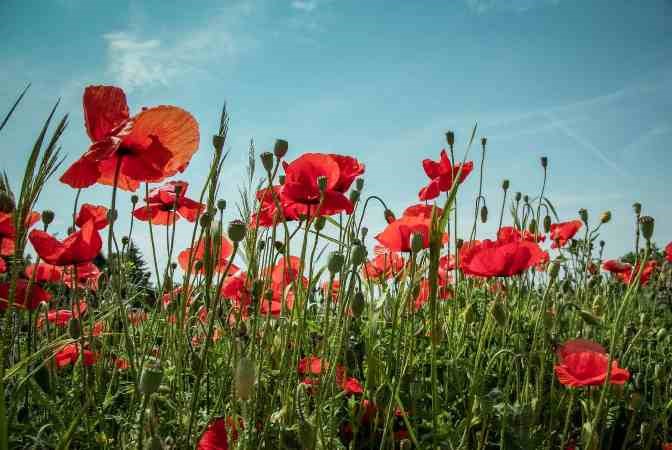Thank you to all of you who wear a poppy on their lapel beginning in November. The significance of the poppy can be traced back to the early 19thcentury, during the Napoleonic Wars when the first connection of the poppy to those who lost their lives in times of war occurred.
The fields of war were barren before the battles were fought but after the fighting ended the fields were filled with mile after mile of blood-red poppies. The chalk soils became rich in lime from the rubble, allowing the poppy to thrive. When the war ended, the lime was absorbed and the poppies began to disappear again.
Once again during the First World War, the fields became rich with lime from rubble and again the poppies thrived. It was in 1915 when John McCrae’s poem In Flanders Fields forever memorialized the poppy as a symbol of those who lost their lives during war. During the 1920s Madame Guerin first used the sale of handmade poppies to raise money for children in war-torn areas. It was also during the ‘20s that the first poppies were distributed in Canada.
Today, it is the mission of the Royal Canadian Legion to “serve veterans and their dependants, to promote remembrance, and to act in the service of Canada and its communities.” The Poppy Campaign is not only a major funding source distributing poppies Canada wide, but also serves to perpetuate remembrance and ensures the memory of the sacrifices made by our war veterans both today and yesterday are not forgotten.
From the horticultural perspective and in addition to being a revered symbol, poppies are simply a stunning plant. There are more than 50 species of annuals and perennials that can be grown quite easily. The Flanders or Shirley poppy (Papaver rhoes) is one of the simplest poppies you can grow. It is a remarkable experience to see seas of scarlet in the fields of Europe in spring. I will never forget in the heart of England going for a walk one evening, through the village, past an ancient well and up a pathway to the top of a rise. At the top of the rise, were endless miles of red which of course was none other than the immortalized poppy.
The Iceland poppy (P. nudicale) is a biennial that grows like an annual. The silky petals are intensely coloured and will produce up to 50 flowers per plant. Ensure you plant this selection in an unmulched area to allow reseeding.
P. somniferum(corn poppy) is a large flowered poppy that produces huge flowers. Following bloom, the large seed pods are filled with edible seeds and are also attractive in dried arrangements.
The Himalayan blue poppy actually belongs to a different genus (Meconopsis) and is similar to true poppies in many ways. It is a perennial for us here and blooms a beautiful blue. They need to be grown in partial shade and need an evenly moist environment.
Grow poppies of any kind in full sun and rich, well-drained soil. Poppies are easy to plant – simply sprinkle seeds lightly on the soil and gently work in. As the seedlings grow, thin so there is four to eight inches between plants. Many poppies will self-seed so ensure they are planted where they can spread. Although the flowers are spectacular, the foliage is less so, so plant them behind other perennials so the foliage is less obvious after bloom.
Hanbidge is the Lead Horticulturist with Orchid Horticulture. Find us at ; by phone at 306-931-4769; by email at [email protected]; on facebook @orchidhort and on instagram at #orchidhort.




